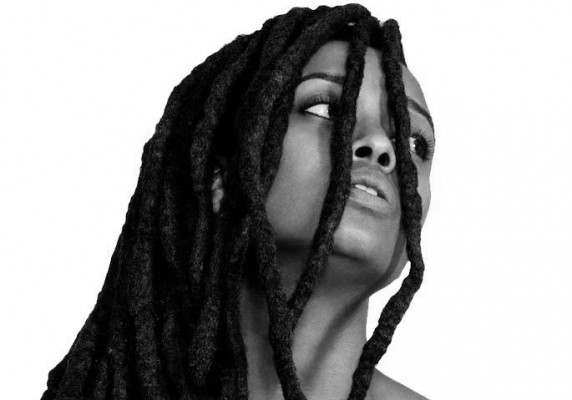Release Date: November 12, 2013
Label: Saint
Saint Heron is a 12-track eye-roll at the new jacks, overseen by Solange. Those unfamiliar with R&B before the late-2011 “indie” narrative took over seem duped into thinking that dudes — not all white dudes, but always dudes – with FL Studio and BitTorrent access have resurrected a genre stunted on its own blackness. There’s something to be said for artists like the Weeknd and Frank Ocean breathing new life into the commercial possibilities of what falls under the umbrella of contemporary R&B, but the widening of that lane — including the possibility of dollars to be made — brought a glut of overnight enthusiasts. It’s not that anyone can’t make R&B; it’s just that a lot of great artists who’ve been doing so for years are being left out of the conversation now thanks to breathy vocalists and late-comer producers clutching a dusty copy of Aaliyah.
This Tumblr-fueled sonic imperalism is exactly what Solange, the less constricted Knowles sister, railed against in a January Twitter spiel calling out dilettante music bloggers and critics for “acting as if [experimental R&B] just popped off last year,” culminating in the brilliant hashtag #DeepBrandyAlbumCuts. (As an aside, it could be argued that Solange, who deliberately courted the Grizzly Bear set, brought this less-informed audience upon herself.) But here, she makes good on the rant, and her newfound ability to bring together an impressively diverse group of listeners. Named for her vanity label, Saint Heron attempts to introduce her besotted fans to a crop of fellow left-field soul singers, including Drake collaborators Sampha and Jhené Aiko, as well as former Diddy protégé Cassie, now a cult-R&B favorite. The first in an allegedly annual series, it’s her definitive curatorial statement on the sound of emerging R&B in 2013, a tremendously important statement since it comes from a member of one of the most exploited and marginalized entities in the music industry — black female singers.
But Solange is also reclaiming a hijacked narrative by highlighting existing and emerging indie-soul artists, introducing listeners to a thriving, experimental scene. (Before alt-R&B or “PBR&B,” we called the dressed-down, post-genre approach “neosoul.”) Saint Heron is Solange retraining the Internet’s gaze on the source. Even mixed-media artist Rashaad Newsome’s cover art recalls the baroque-on-black surrealism of Michael Jackson’s Dangerous, which succeeded in 1991 in part by translating a then-innovative form of R&B: New Jack Swing.
This album succeeds through diversity — there are male and female voices, throwback-y vibes and futurism — though most of the production is similarly space-filled and minimal. This leaves a lot of emphasis on the voices, which, in this world, are what truly separate the creators from the copycats. Kelela, the new digital diva over at Fade to Mind, doesn’t have a voice as capably heady and strong as Solange’s or Aiko’s. But she’s sinewy in a way they aren’t, wringing, flinging, and sinking bright, dew-speckled incantations over flickering, sensuous production by Kingdom and Morri$. The latter’s “Go All Night” is a skittering body-roller first introduced as two snippets on Kelela’s recent mixtape Cut 4 Me; presented here in full, its sighing harmonies fester against sampled snippets of a male voice answering her “Take my body, it’s alright” plea with a cocky, lip-licking “Uh-huh.” Her taste for such beats might make her the most innovative artist here.
On “Beneath the Tree,” British singer Sampha, who aside from Drizzy has also collaborated with SBTRKT and Jessie Ware, tucks his brûlée vocals under layers of effects, shivering maracas, and pulsing keys. It was originally released this summer on his self-produced Dual EP, but though his barren croon is rising in profile, the song’s inclusion here underscores his beautiful songwriting ability, too. That’s followed by “Relax,” from Starchild, who has the same genteel timbre, paired with the downcast pop sensibility of Toro Y Moi.
Elsewhere, it’s all about the voice — or the ways it can be manipulated. L.A.’s India Shawn evokes the wounded gilt of Blu Cantrell on high point “I’m Alive,” singing over a feverish electro-blues track that mixes a loping bass line and ticking hi-hats with a filtered choir patch. Iman Omari and Jade De Fleur — both with distinctive, metallic grains — prove too much for their swirling, heat-building palettes; unreleased tracks from BC Kingdom and Cassie lean heavily on plaintive, processed vocals punctuated by padded drums.
What’s interesting about Saint Heron is that it trips giddily over the line between relatively conventional approaches (Aiko, Solange, Shawn) and more heavily processed, speculative stuff (Sampha, Iman Omari, BC Kingdom), but takes no pains to make an overarching statement. In doing so, Knowles capably argues a point that she might not have even intended to make with her Twitter tirade: Even when experimenting, soul music never sells its own soul.





